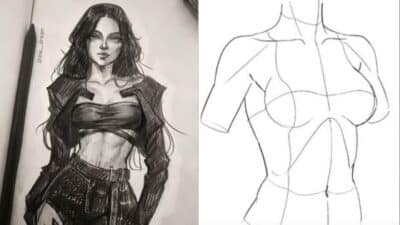Art design is a vast landscape where creativity meets intention, offering endless possibilities for expression and innovation. Whether you’re an established artist seeking fresh inspiration or a beginner exploring artistic avenues, the world of art design continues to evolve with exciting trends and timeless techniques in 2025. Finding unique art ideas that resonate with your personal aesthetic while capturing viewers’ attention requires understanding core design principles and knowing where to look for inspiration.
The beauty of art design lies in its versatility across mediums – from digital illustrations and canvas paintings to mixed media installations and sculpture. You can explore abstract concepts that play with colors and shapes or delve into representational work that tells specific stories. Today’s art scene embraces diversity in both approach and execution, with many artists combining traditional techniques with modern technology to create distinctive pieces.
Key Takeaways
- Understanding fundamental design principles like balance, contrast, and rhythm will significantly strengthen your artistic compositions regardless of medium.
- Exploring various sources of inspiration, from nature and architecture to personal experiences, can help you develop unique art concepts that feel authentic.
- Experimenting with different materials and techniques allows you to discover your artistic voice and create distinctive work that stands out in today’s creative landscape.
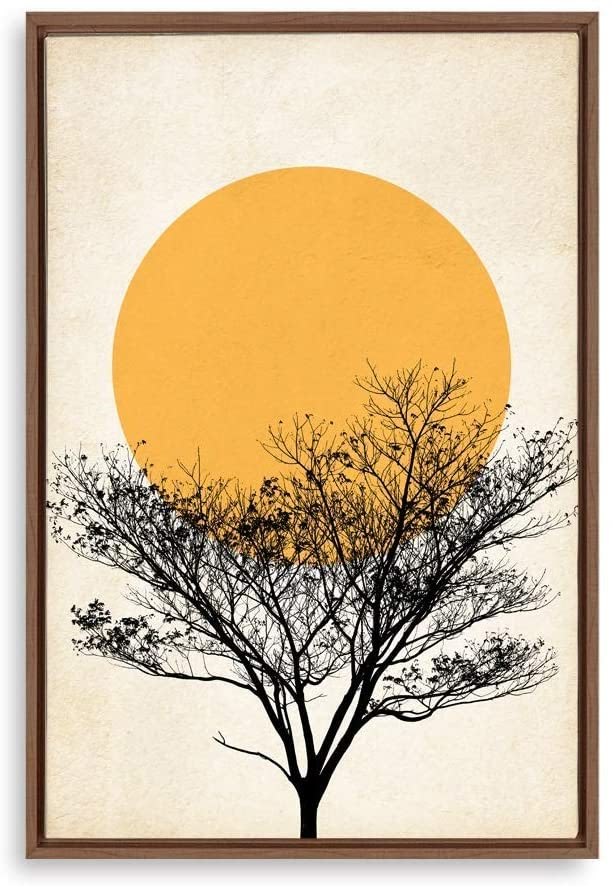

Core Principles of Art Design
Art design relies on fundamental principles that guide effective visual communication. These principles serve as the building blocks for creating compelling and balanced artwork that can engage viewers on multiple levels.
Understanding Color Theory
Color theory forms the backbone of effective design, influencing mood, perception, and visual hierarchy. The color wheel—divided into primary, secondary, and tertiary colors—provides a framework for creating harmonious combinations.
Complementary colors sit opposite each other on the wheel (like blue and orange) and create strong contrast when placed together. This pairing can draw attention to key elements in your design.
Analogous color schemes use colors that sit next to each other on the wheel, creating harmony and cohesion. For subtle, sophisticated designs, try monochromatic schemes using variations of a single color.
Remember that colors evoke emotional responses: blues tend to feel calm and trustworthy, reds energetic and passionate, while yellows suggest optimism and clarity. Temperature also matters—warm colors advance visually while cool colors recede.
Exploring Shape and Form
Shapes and forms provide structure and meaning in design, whether they’re geometric, organic, or abstract. Geometric shapes like squares, circles, and triangles convey precision and order, making them suitable for corporate designs or situations requiring clarity.
Organic shapes, inspired by nature, create a more relaxed, approachable feel. Their irregular, flowing qualities can make designs feel more human and accessible.
Form refers to three-dimensional objects or the illusion of depth. Even in 2D work, you can create the impression of form through:
- Shading techniques
- Perspective drawing
- Overlapping elements
- Size variation
The interplay between positive shapes (the objects) and negative space (the background) creates visual tension and interest. Well-balanced designs consider both equally.
The Role of Line and Texture
Lines direct the viewer’s eye and establish movement within your composition. Horizontal lines suggest stability and calm, while vertical lines convey strength and growth. Diagonal and curved lines add dynamic energy and movement to static designs.
Line weight affects visual hierarchy—thicker lines appear closer and more important than thinner ones. Experiment with continuous lines versus broken or dotted lines to create different rhythms and feelings.
Texture adds tactile quality to your work, whether actual (physical) or implied (visual). It creates depth and interest even in minimal designs. Consider these texture applications:
- Rough textures grab attention and create visual weight
- Smooth textures appear refined and sophisticated
- Pattern-based textures add rhythm and repetition
Combining contrasting textures creates visual interest and hierarchy. Digital designs often simulate textures through photography or illustration to add dimension to otherwise flat compositions.

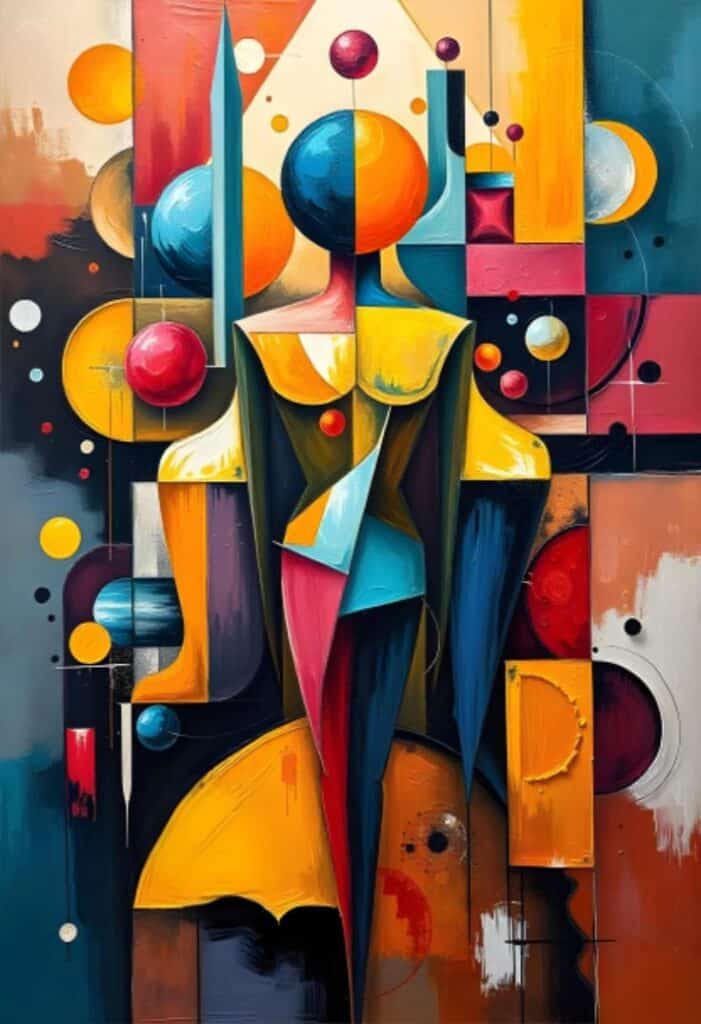
Inspiring Art Design Ideas
Art design offers endless possibilities for transforming your space with visual impact and personal expression. The right approach can elevate your environment while showcasing your unique aesthetic sensibilities.
Creative Pattern Approaches
Patterns can dramatically transform any space with minimal effort. Consider geometric designs for a contemporary feel or organic patterns for a more natural ambiance. These visual elements work exceptionally well on accent walls or as focal points in neutral rooms.
Try layering different patterns with complementary color palettes to create depth and visual interest. The key is maintaining balance—pair bold patterns with simpler elements to avoid overwhelming the space.
Repetitive patterns create rhythm in your design, guiding the eye throughout the room. Experiment with scale by mixing large and small patterns for dynamic contrast. This technique adds sophistication while maintaining visual harmony.
Digital tools now make custom pattern creation accessible to everyone. Design your own repeating motifs that reflect personal interests or cultural influences for truly unique decor elements.
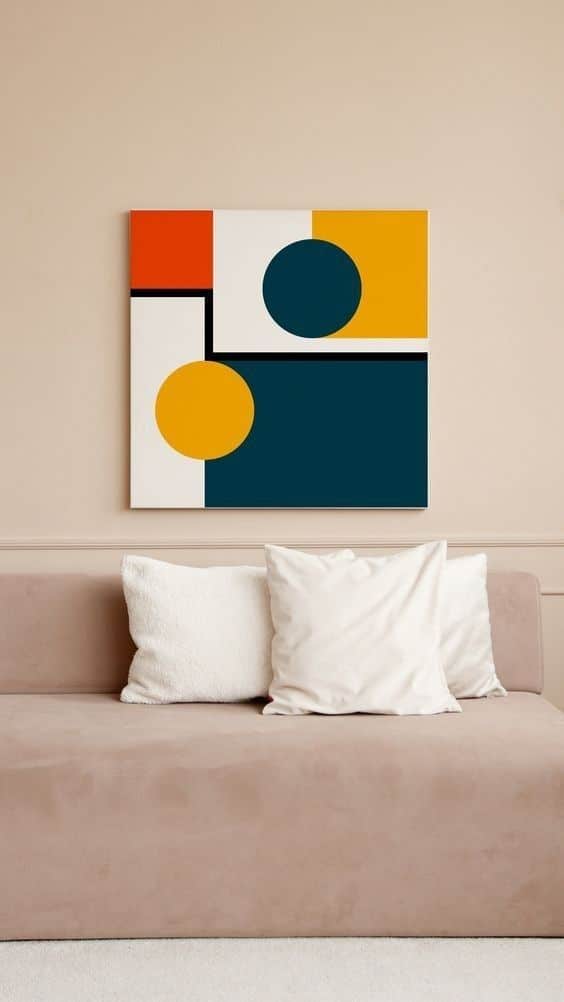
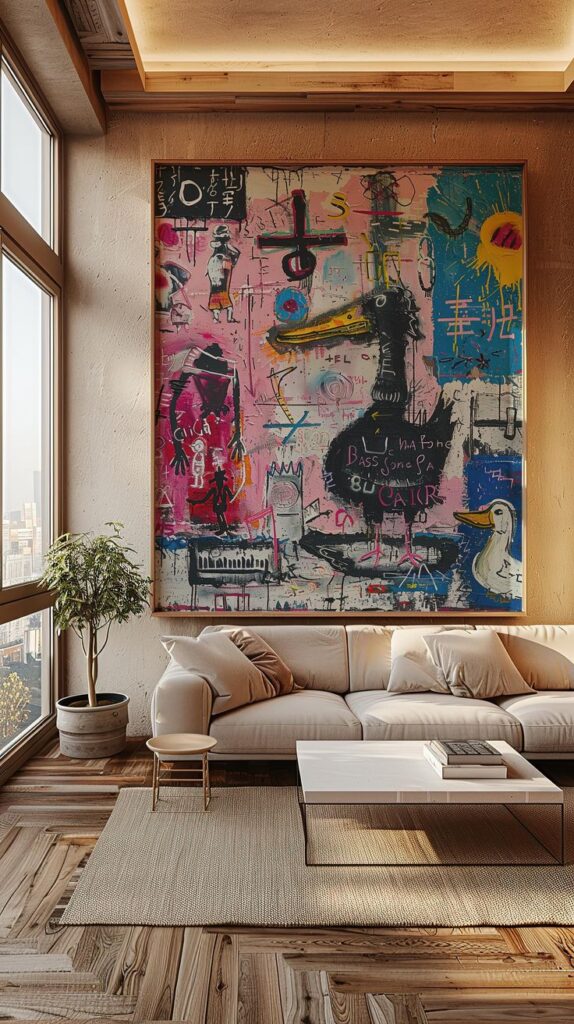
Gallery Wall Concepts
Gallery walls offer versatile opportunities to display your favorite artwork, photographs, and memorabilia. Begin by selecting pieces that share a common element—color scheme, subject matter, or frame style—to create cohesion.
Consider these arrangement styles:
- Grid layout: Formal and structured
- Salon style: Organic and eclectic
- Single row: Minimalist and focused
When planning your gallery wall, lay out the arrangement on the floor first. This preview helps you visualize the final result before committing to wall placement. Leave 2-3 inches between frames for visual breathing room.
Mix mediums for added interest—combine paintings with photographs, prints, and three-dimensional objects. This diversity creates a collected-over-time feel that tells your personal story through art.
Innovative Wall Decor
Wall decor extends far beyond traditional framed art. Textile hangings add texture and warmth while improving room acoustics. Consider macramé, woven tapestries, or fabric panels for soft dimension.
Sculptural installations create dramatic visual impact. Metal wall sculptures, wooden reliefs, or ceramic pieces introduce three-dimensional elements that catch light and cast interesting shadows throughout the day.
Functional art merges beauty with practicality. Look for artistic shelving units, decorative hooks, or mirror designs that serve dual purposes while enhancing your aesthetic. These pieces maximize space utility without sacrificing style.
Digital projection mapping transforms walls into dynamic canvases. This technology allows you to change your wall art seasonally or even daily. Interactive wall installations respond to movement or touch, creating immersive experiences that evolve with viewer participation.
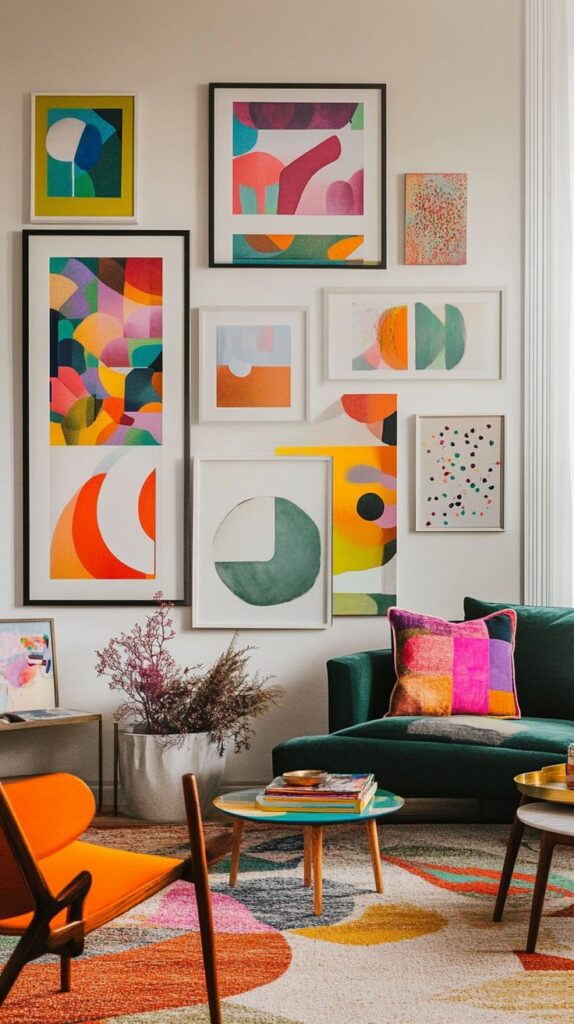
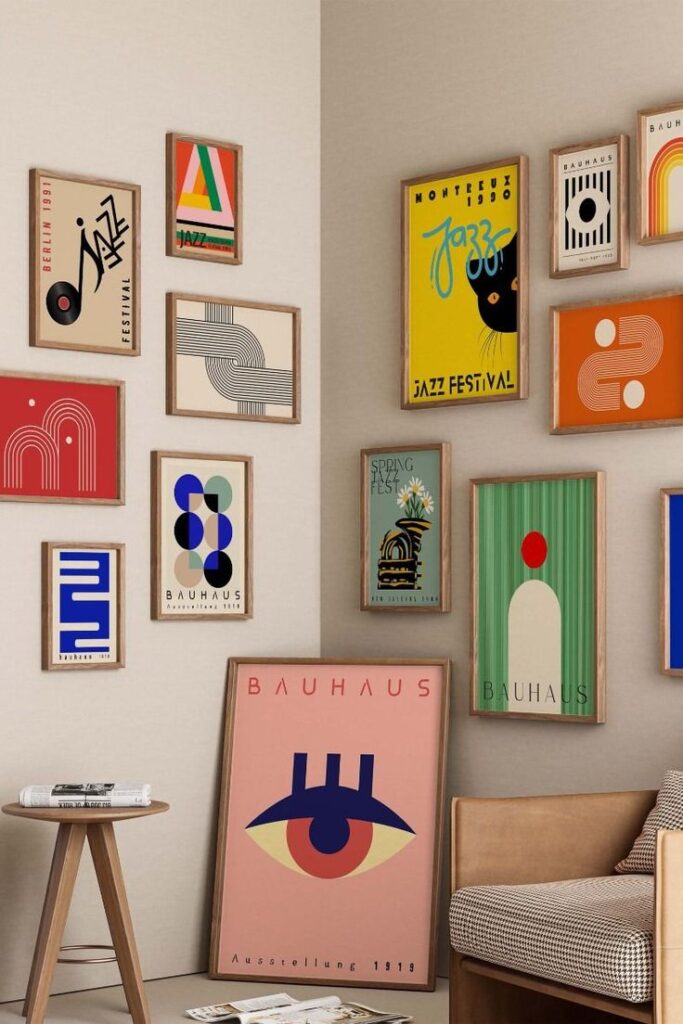
Effective Use of Space and Unity
Space and unity serve as fundamental elements in art design that directly impact visual harmony and viewer engagement. These principles help transform ordinary compositions into cohesive works that communicate effectively with audiences.
Balancing Space in Composition
Space in art design refers to both the positive (filled) and negative (empty) areas within your composition. To create visual interest, you need to carefully balance these elements.
When working with empty space, don’t view it as an absence but as an active design element. Negative space creates breathing room and helps direct the viewer’s eye to focal points.
Try varying the density of elements across your composition. Areas of concentration create points of interest, while sparser regions provide visual relief.
For spatial compositions, consider ignoring strict realism. Using shades of blue and purple can create depth, while positioning a large colorful object as a focal point draws attention.
Remember that space isn’t just two-dimensional. You can create depth through overlapping elements, size variation, and color gradients that suggest distance.
Achieving Unity in Art Design
Unity binds all elements of your design into a cohesive whole. Without it, your artwork might feel disconnected or chaotic.
One effective approach is using a consistent color palette. Some artists prefer working with primary colors against a neutral background to create harmony while maintaining visual interest.
Repetition of shapes, patterns, or textures creates rhythm that unifies your composition. Try repeating geometric forms with slight variations to maintain both cohesion and interest.
Consider proportion and balance as key factors in achieving unity. The relationship between elements should feel intentional and harmonious rather than random.
You can create unity through consistent style or technique across your work. This doesn’t mean every element must be identical—variations within a theme often produce the most engaging results.
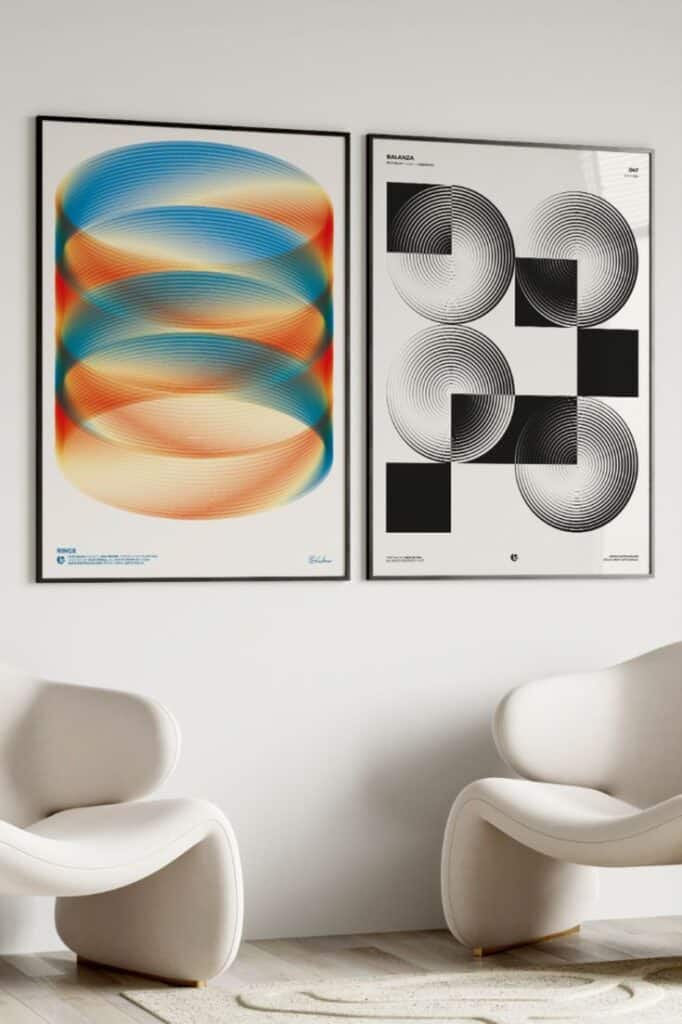
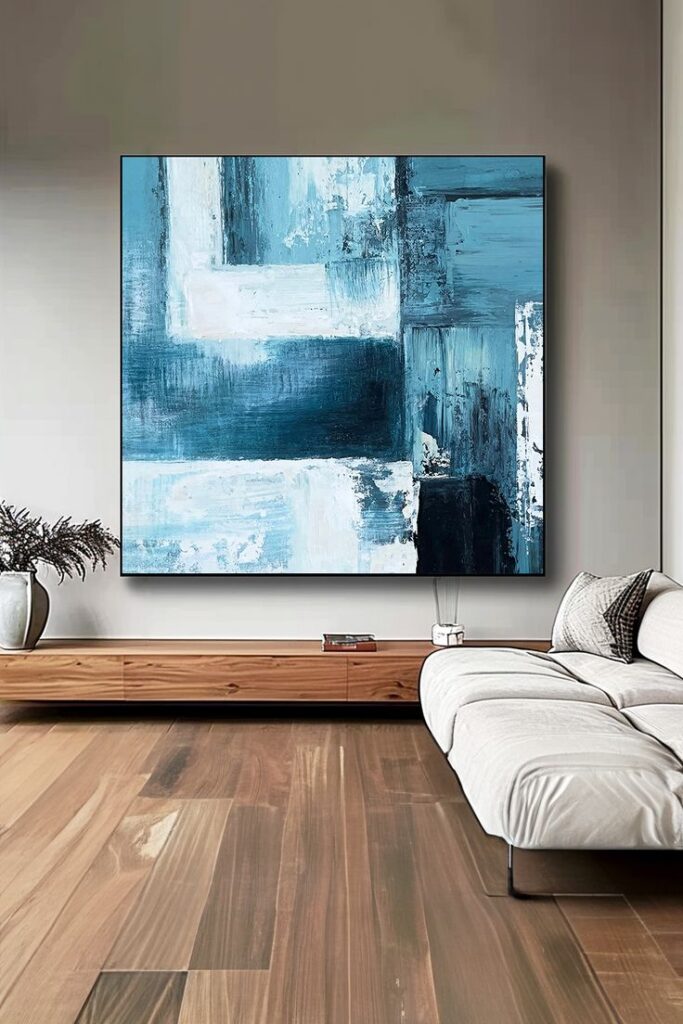
Mediums and Materials in Art Design
Artists express their creativity through various materials and mediums, each offering unique characteristics and possibilities. The choice of medium significantly impacts the final aesthetic, texture, and longevity of artwork.
Working with Paintings
Painting remains one of the most versatile art forms with numerous medium options to explore. Oil paints provide rich color depth and slow drying times, allowing for detailed blending and layering techniques.
Acrylics offer versatility with quick-drying properties, making them ideal when you need to complete projects faster. They adhere to many surfaces and can mimic both watercolor and oil techniques depending on dilution.
Watercolors create luminous, transparent effects that work beautifully for landscapes and delicate subjects. You’ll find they interact uniquely with paper, creating soft edges and gradients impossible with other mediums.
When selecting painting mediums, consider your project timeline, desired texture, and environmental factors. Each medium requires specific tools and techniques—brushes, palette knives, or even fingers can dramatically alter your results.
Incorporating Mixed Media
Mixed media art combines multiple materials to create textured, dynamic pieces that transcend traditional boundaries. You can layer different elements like paper, fabric, photographs, and found objects with traditional painting mediums.
Collage techniques using recycled materials or natural elements like leaves, stones, and sand add environmental connection and texture to your work. These unconventional additions create visual interest and tactile dimensions.
Digital tools now frequently complement traditional methods. You might begin with hand-drawn elements, then scan and manipulate them digitally before printing and adding physical textures.
Polymer clay and resin have gained popularity for adding three-dimensional elements to otherwise flat compositions. These materials allow you to embed objects or create raised surfaces that catch light in interesting ways.
When experimenting with mixed media, focus on material compatibility. Some combinations may deteriorate over time if adhesives or mediums aren’t properly matched.


Enhancing Artistic Expression
Artistic expression flourishes when you incorporate innovative techniques and organizational methods. The right tools and approaches can transform your creative process from ordinary to extraordinary.
Adding Visual Interest with Links
Links serve as powerful connectors in artistic design, creating visual pathways that guide the viewer’s eye through your work. You can incorporate physical links like chains or string in mixed media pieces to add texture and dimension.
Digital artists should consider hyperlinks as creative elements that connect different components of interactive designs. Try using linked elements in contrasting colors to create focal points in your composition.
Links can also represent conceptual connections between ideas. Create visual links through repeated patterns, colors, or shapes that appear throughout your piece. This technique establishes rhythm and cohesion.
Consider using linked frames or panels to tell a sequential story in your artwork. This approach works especially well for narrative illustrations or comic-style designs.
Making Notes for the Creative Process
Documenting your thoughts during creation enhances your artistic development. Keep a dedicated sketchbook where you jot down ideas, inspirations, and technical solutions as they emerge.
Create a visual vocabulary by noting color combinations that work well together. Use swatches or small sample areas to reference later. This practice builds your unique palette over time.
Try mind-mapping techniques to explore connections between concepts. Start with a central idea and branch outward with related thoughts, sketching small thumbnails alongside written notes.
Document your process through photographs or time-lapse recordings. These notes capture techniques that might be difficult to describe in words alone and provide valuable reference material.
Use coded notes or symbols that make sense to you. Develop a personal shorthand for common elements or techniques you frequently use.
Using Cookies for Interactive Designs
Digital artists can leverage cookies to create personalized, interactive experiences. Implement cookie-based functions that remember a viewer’s previous interactions with your digital artwork, allowing for evolving experiences.
Design interactive pieces that change based on user preferences stored in cookies. This might include color schemes, animation speeds, or compositional arrangements that adapt to individual taste.
For installation art, consider the physical equivalent of cookies—elements that respond to and remember visitor interactions. Motion sensors can track movement patterns and adjust lighting or sound accordingly.
Create digital artwork that builds upon itself with each viewing. Cookies can store information about previous viewing sessions, allowing your piece to develop new elements over time.
Remember to respect privacy concerns when using digital cookies. Always provide clear information about data collection in your digital art installations or websites.
- 549shares
- Facebook0
- Pinterest549
- Twitter0


